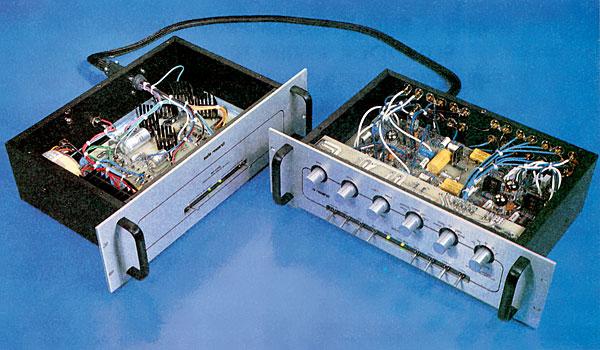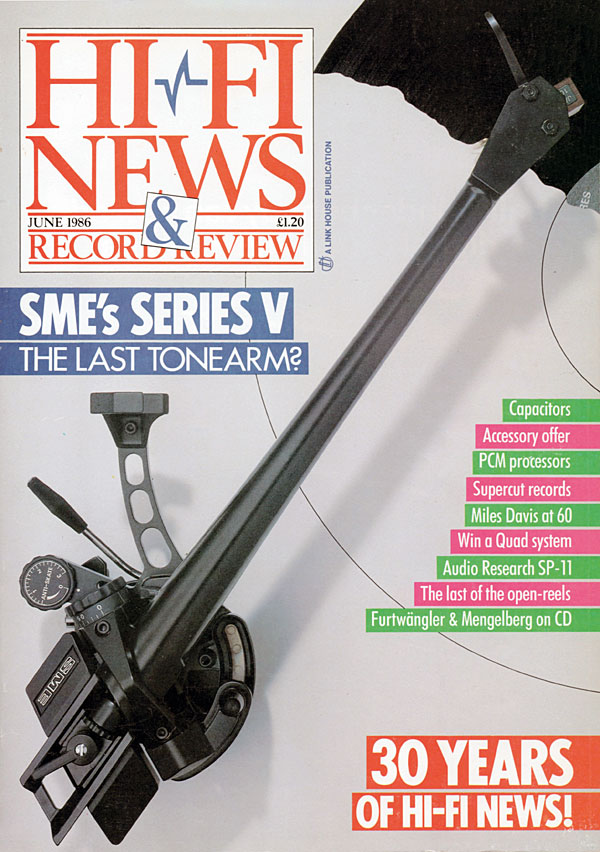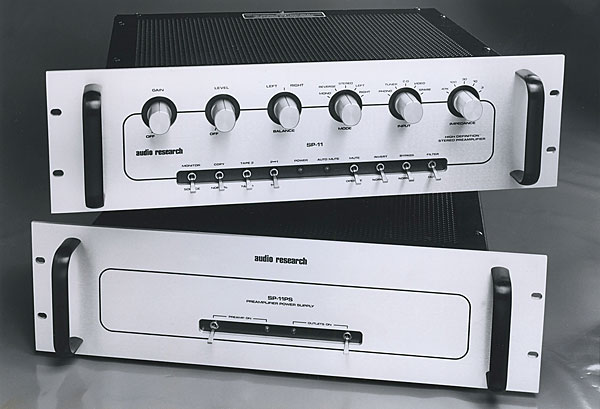Valvhalla

 Ken Kessler takes delivery of the Audio Research SP-11 preamplifier
Ken Kessler takes delivery of the Audio Research SP-11 preamplifier
The time is early June, and let us imagine that this issue has been on the stands for two weeks. Editorial secretary Jennifer Scotland walks to where I am sitting and dumps a pile of letters on my desk. The angry correspondence has arrived.
John Atkinson was clever. Having bade farewell as editor in May, he knew he wouldn't be around to face the displeasure of readers who hate reports on expensive equipment. Incoming editor Steve Harris couldn't be blamed; he's not responsible for an issue that 'went to bed' before he even started work. KK is the only remaining guilty party. Let him explain why HFN devoted space to a £5000 preamp.
Save your stamps. I have no intention of answering a single letter which complains about the Audio Research SP-11 (or our coverage of it) because of price. We've been through this a dozen times, had anger-filled missives from readers who think we spend too much of our energies dealing with 'exclusive' equipment. But the facts remain...

To begin with, HFN is a specialist journal aimed at readers interested in the furthering of the state of the art. Then there's the fact that advances in hi-fi have accelerated at a rate which now yields up to a half-dozen monumental products per year, and such products rarely emerge from the budget sector. Finally, the best costs money. And I mean lots of money.
That's The Spirit
I open this report on the SP-11 with these concerns because I wish to get them out of the way. I intend to revel in the SP-11 on page as I did while I had it at home. To those of you with no interest in products like the SP-11, which unabashedly strive to make music that much more satisfying, I ask, 'Why are you reading a hi-fi magazine with those same goals?'. There are other journals quite content to review £249 midi-systems and ghetto blasters; we believe that HFN readers are all well into the advanced stages of separates ownership, even if they restrict their purchases to items that are far more affordable.
Enough. I've just finished the most intensive listening period I've ever experienced, having lived for a while with a system which costs more than I spent on my house. The gear is to be collected tomorrow, and I don't feel depression setting in because I have to let it go. Instead, I feel enriched, as rewarded as would be a whisky lover who had but one glass of a dream dram, knowing that he has to return to more ordinary drops for the foreseeable future. As one little ol' drinker sang, 'Memories are made of this...'.
The SP-11 arrived in two boxes, each weighing no more than an average cassette deck. One held the preamp itself, the other the power supply which makes this preamp so different from its predecessor. As JA gleefully reminded me, the SP-11 has traded many of its valves for solid-state devices, including the whole of the power supply. 'Ken,' he chortled, flecks of Peperami sausage flying from his lips, 'you've fallen for a preamp that's 90% solid-state!'. 'It still houses six valves,' I countered.
'Big deal. They're used in the less critical stages. The rest is as God and Dan D'Agostino planned it. No vacuums, no heaters, no anodescathodesvalvepins. Ha-ha-ha! Next you'll be using a Linn Sondek!' I left the office without twisting the knife: JA adores his SP-10, despite its valve complement.

The two units show no stylistic departure from the SP-10, and hi-fi shop habitues may be forgiven for not recognising the SP-11 on first encounter. As with the SP-10, the power supply sports two toggles, one for power-on and one to power the convenience outlets on the rear (blanked off for the UK). A captive three-core mains lead and a fat umbilical fitted with milspec connectors to attach to the preamp chassis complete the array.
Set The Controls
The preamp fascia is packed with the kind of no-nonsense controls that will give palpitations to any true-blue tweaker. Full tape-dubbing facilities, source selection which includes inputs labelled 'CD' and 'Video', phono adjustment to select either 47kohm or four values up to 100ohm for MC, stereo mode selection including left-only, right-only, and reverse, front-panel polarity inversion, mute, balance, gain, and level controls. Additionally, there's a bypass toggle which eliminates all non-essentials from the signal path. The back contains all-gold socketry, as well as a choice of direct or inverted main outputs. On Martin Collom's advice, the listening sessions were conducted using the non-inverting outputs, bypass engaged, and with the Koetsu Signature Red cartridge fed into the 47kohm setting.
MC's hints saved me hours of experimentation, especially his finding that the SP-11 sounded best with the gain control on full, setting the listening levels with the level control, despite a slight increase in noise. With the gain control set at the 12 o'clock position, noise was non-existent, but soundstage was slightly reduced. As the noise was virtually insignificant even in the preferred full-gain position, this wasn't deemed a shortcoming.

JA had reservations about me using Beard amplifiers, despite my familiarity with their performance. Fortunately, a pair of the new Mark Levinson No20 Class A monoblocks arrived in time for me to devote four days to uninterrupted listening with power amps more in keeping with £5k preamps. The ends of the system consisted of the Oracle turntable with Premier FT-3 arm, Garrott Decca and aformentioned Koetsu cartridges, and Apogee Scintilla loudspeakers. I also used a Yamaha CD-X1 CD player along with a Marantz 10B tuner.
Home Truths
The total cost of the LP-only system (using the Levinson amps) was £2 short of twenty-five grand, counting mains plugs, Flux Dumpers, and every other little ingredient. This is more than I owe Nat West for my home, and more than double the nation's average annual wage. To say it was humbling hardly conveys the bowel-tightening realisation that insuring the system would result in looks of utter disbelief from any sane insurance salesperson (a contradiction in terms, I know).
























































